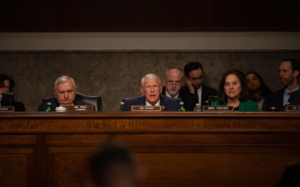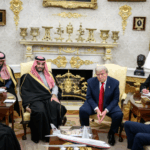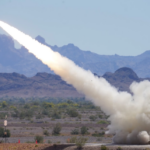
The top Republican on the Senate Armed Services Committee is calling to boost the defense topline for fiscal year 2025 by an additional $55 billion, part of a new proposal that pushes to increase annual U.S. defense spending to five percent of the gross domestic product. Sen. Roger Wicker (R-Miss.), the SASC ranking member, unveiled his plan on Wednesday for a “generational investment” in defense, which includes a widespread array of recommendations ranging from maxing out munitions production capacity, growing…

 By
By 











